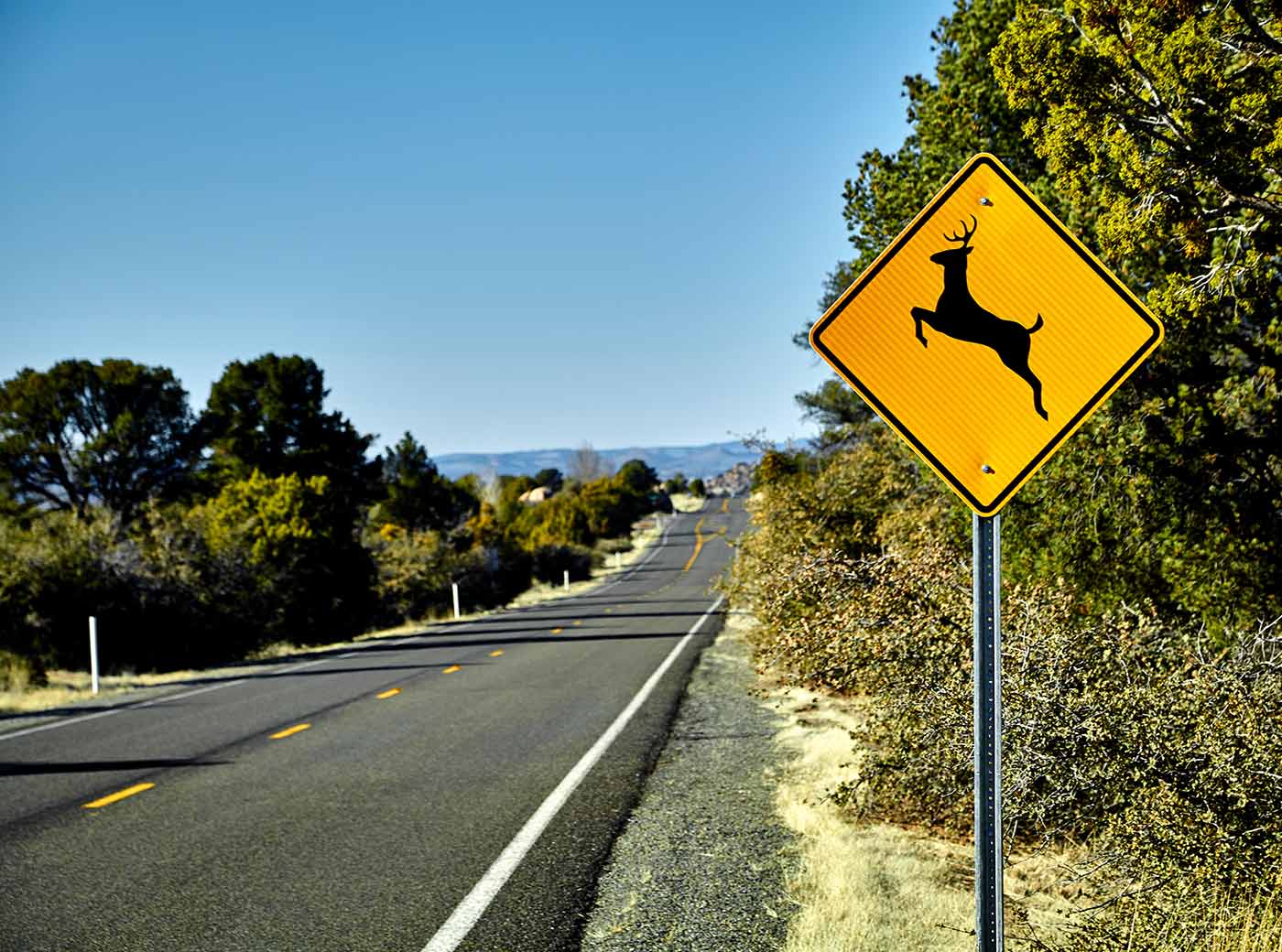Fix Your Car After a Crash
Get an estimate from AAA to repair your car—you can even learn what member discount is available for the work at AAA Approved Auto Repair facilities.
It can often cause a more serious crash.

Pamela Au/Alamy
Swerving to miss wildlife wandering in the road is often a natural reaction. But it can also be dangerous and put you at risk for a serious crash. More than 1.5 million deer-vehicle collisions occur each year in the United States, the Insurance Institute for Highway Safety estimates. Those collisions result in about $1 billion in vehicle damage and cause 150 deaths each year.
Get more tips for what to do in a car accident or breakdown.
Explore CoverageYou’re more likely to cross paths with deer during the fall, which is their mating season. Insurance claims for collisions with animals rise dramatically in the last three months of the year. Combine deer mating season with fewer hours of daylight, and it’s a recipe for disaster if you’re not paying attention to your surroundings.
Reduce your chances of colliding with deer by following these tips—and learn what to do if a crash is unavoidable.
Heed speed-limit and deer-crossing signs, and stay especially alert for deer at dawn and dusk, when they’re most active. If you do see one crossing or standing beside the road, slow down—deer can be highly unpredictable, and because they often travel in herds, there are likely others nearby. Don’t bother with gimmicks: Flashing high-beam headlights or honking your horn won’t keep deer off the road.
If you can’t avoid hitting a deer, don’t swerve but do brake firmly. Hold on to the steering wheel and stay in your lane. Then bring your vehicle to a controlled stop.
Pull off the road and turn on your emergency flashers. Don’t try to remove the deer from the roadway—it may be alive, and its hooves or antlers could injure you. Report the crash to the police and your insurance company.